As Catholics remember Our Lord’s Passion, we must deeply consider the significance of His Five Wounds
Tomorrow, the Christian world will mourn humanity’s violent abuse of its Savior, the Son of the Living God. Catholics are instructed not to shy away from the gore of history’s most nefarious homicide. Contemplating Christ’s suffering in minute detail is intended to strike our hearts with the contrition necessary to amend our lives to save our souls.
In my adult life, I have embraced the opportunities that Good Friday presents for reflection on this historic event. Christ’s goodness, humankind’s depravity, and my culpability come into sharp focus. The rituals, including meditations on the Seven Last Words, Stations of the Cross, and Veneration of the Cross, are important exercises for making this distant event immediate in our spiritual lives.
But, not everyone can spend three plus hours in Church on a Friday. If you are looking for a novel approach to memorializing Christ’s Passion that will fit into a busy schedule, I offer this Rosary meditation I wrote a few years back. It’s written to be said in a group or family setting, but anyone can do it individually. Knowledge of How to Say the Rosary is a prerequisite.
Good luck and God bless.
Opening prayer
Hold the crucifix:
Leader: Lord, gazing at Your image on the crucifix, I prepare to contemplate Your sacred wounds.
All: Open my heart to a deeper understanding of Your corporal and spiritual suffering freely undertaken for the salvation of my soul.
All: I believe…
On the first large bead:
Leader: “Now he who was betraying Him gave them a sign, saying, “Whomever I kiss, He is the one; seize Him.” (Matthew 26:48)
All: Lord, grant that my lips shall never betray You.
All: Our Father…
One the first small bead:
Leader: “Now Peter was sitting outside in the courtyard, and a servant-girl came to him and said, “You too were with Jesus the Galilean. But he denied it before them all, saying, ‘I do not know what you are talking about.’” (Matthew 26: 69-70)
All: Lord, grant that my lips shall never deny You.
All: Hail Mary…
One the second small bead:
Leader: “When he had gone out to the gateway, another servant-girl saw him and said to those who were there, ‘This man was with Jesus of Nazareth.’ And again, he denied it with an oath, ‘I do not know the man.’” (Matthew 26: 71-2)
All: Lord, grant that my lips shall never deny You.
All: Hail Mary…
One the third small bead:
Leader: “A little later the bystanders came up and said to Peter, ‘Surely you too are one of them; for even the way you talk gives you away.’ Then he began to curse and swear, ‘I do not know the man!’ And immediately a rooster crowed. And Peter remembered the word which Jesus had said, ‘Before a rooster crows, you will deny Me three times.’ And he went out and wept bitterly.” (Matthew 26: 73-5)
All: Lord, grant that my lips shall never deny You.
All: Hail Mary…Glory Be… Fatima ejaculation (O, my Jesus, forgive us our sins. Save us from the fires of hell. Lead all souls unto heaven, especially those most in need of thy mercy.)
The First Decade: The Wounds on Jesus’ Back as He Is Scourged at the Pillar
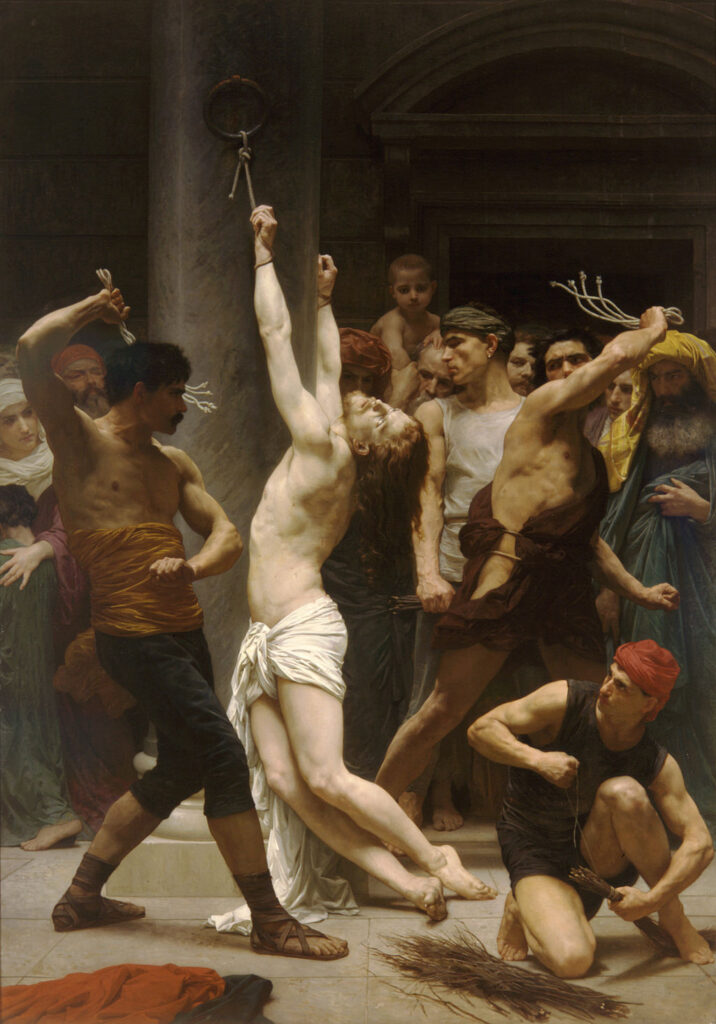
Leader: “So Pilate, wishing to satisfy the crowd, released Barabbas to them and, after he had Jesus scourged, handed him over to be crucified.” (Mark 15: 15)
All: Lord, open my heart, as I contemplate the wounds to Your shoulders and back, willingly suffered at the pillar for my salvation.
Leader: Jesus, You called Your disciples by saying, “Follow me.” Did they study Your back as You walked throughout Galilee? As You climbed to Jerusalem? Did they measure Your shoulders, comparing Your width to their own? You warned, they too would have to “pick up” a cross. Did they picture a cross on Your shoulders and imagine themselves doing the same?
Your suffering at the pillar is prefigured in Your words and deeds. When You said, “Get thee behind me, Satan,” to chastise Peter, You placed the Evil One figuratively at Your back. But it wasn’t until You were securely bound to the pillar that his claws could strike.
When You cleared the Temple of the merchants profaning Your Father’s house, You quickly fashioned a whip out of cords. As our sins are a profanation of our inner temples, scourging is a punishment we have earned. But You have willingly taken that punishment upon Yourself for our sake. And even after the scourging has torn Your shoulders to shreds, You are still determined to bear the cross of our salvation.
Let us pray.
All: Our Father, 10 Hail Marys, Glory Be…, Fatima ejaculation.
The Second Decade: Jesus Receives the Crown of Thorns
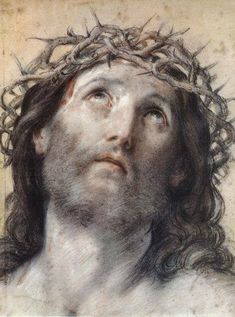
Leader: “The soldiers led him away inside the palace, that is, the praetorium, and assembled the whole cohort. They clothed him in purple and, weaving a crown of thorns, placed it on him. They began to salute him with, ‘Hail, King of the Jews!’ and kept striking his head with a reed and spitting upon him. They knelt before him in homage. And when they had mocked him, they stripped him of the purple cloak, dressed him in his own clothes, and led him out to crucify him.” (Mark 15: 16- 20 )
All: Lord, open my heart, as I contemplate the wounds made on Your holy brow.
Leader: Lord, when You were born, wise men gave You a gift of gold, fit for a king. But You set riches aside, choosing to serve rather than be served. As You told a young, would-be disciple, “The Son of Man has no place to lay his head.” That was the burden on Your kingship, as You traveled the countryside in search of the lost sheep of Israel. Then, as Your hour drew close, as You prayed for the strength to do Your Father’s will, You sweat forth drops of blood. That would have been a sufficient crown for a Suffering Servant King. But so that the scriptures might be fulfilled, You submitted to mockery and abuse, even to letting them place a crown of thorns on Your head. Lord, open our hearts to understand how our sins mock Your kingship, wounding Your dignity and ours.
Let us pray.
All: Our Father, 10 Hail Marys, Glory Be…, Fatima ejaculation
The Third Decade: The Nails Are Driven Through Jesus’ Hands
Leader: “So they took Jesus, and carrying the cross himself he went out to what is called the Place of the Skull, in Hebrew, Golgotha. There they crucified him, and with him two others, one on either side, with Jesus in the middle.” (John 19: 16 – 18)
All: Lord, open my heart, as I contemplate the wounds made by piercing Your sacred hands.
Leader: Jesus, we imagine the first time You used Your hands, tightly gripping Your mother’s finger as You lay in the manger at Bethlehem. We picture Your hands growing strong under St. Joseph’s tutelage, as You learned to use his carpentry tools. You used Your hands to bless and to heal. Your hands blessed and broke the bread with which You fed the multitudes. Your hands broke the bread and lifted the cup when You instituted the Eucharist. Your hands, kind, strong and open, are now pierced with iron spikes, fixing Your arms to the cross. Lord, help me to understand how my sins frustrate the work of Your hands, and how I might better imitate Your generous actions.
Let us pray.
All: Our Father, 10 Hail Marys, Glory Be…, Fatima ejaculation
The Fourth Decade: The Nails Are Driven Through Jesus’ Feet
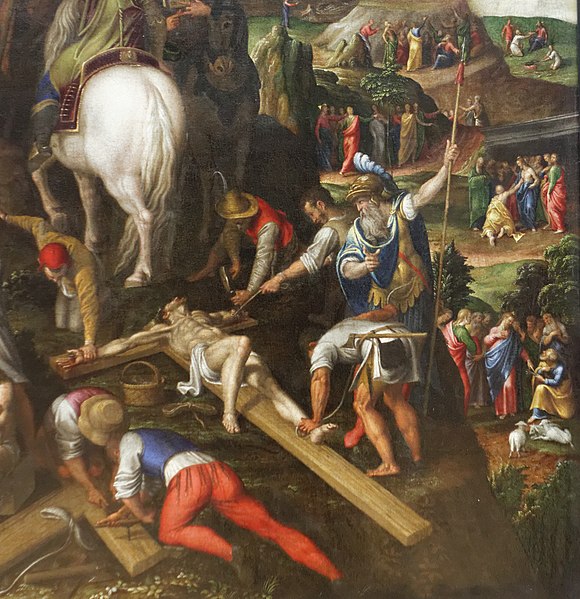
Leader: “When they came to the place called the Skull, they crucified him and the criminals there, one on his right, the other on his left.” (Luke 23: 33)
All: Lord, open my heart, as I contemplate the wounds of Your pierced feet.
Leader: Lord Jesus, like us, You kicked inside Your mother’s womb. Like us, You had to learn to walk. You took Your first steps in Egypt, and later walked to the Promised Land. During Your three-year ministry, You walked all over Galilee, into Samaria, and down to Judea. You walked on the Sea of Galilee and You climbed the mountain to Jerusalem. You sent Your disciples out on foot, and later humbled Yourself to wash their feet. What was the meaning of that gesture? Of course, You were teaching them to serve, but You were also cleaning the soil of Judea off their feet, signaling that they would walk to the ends of the Earth in answer to Your Great Commission.
Then, on the day of Your Passion, You walked the Via Dolorosa, and climbed uphill to Calvary. By right, we should throw ourselves at your feet, wash them with our tears. But too often, by our words and our deeds, we act as the pagans who nailed your feet to the cross.
Lord, on Calvary, Your feet were pierced and fixed to the wood of the cross. There Your travels ended, or so it seemed. But even crucifixion could not stop You from going where You would, and we know You are with us today.
Let us pray.
All: Our Father, 10 Hail Marys, Glory Be…, Fatima ejaculation
The Fifth Decade: The Lance Pierces Jesus’ Side
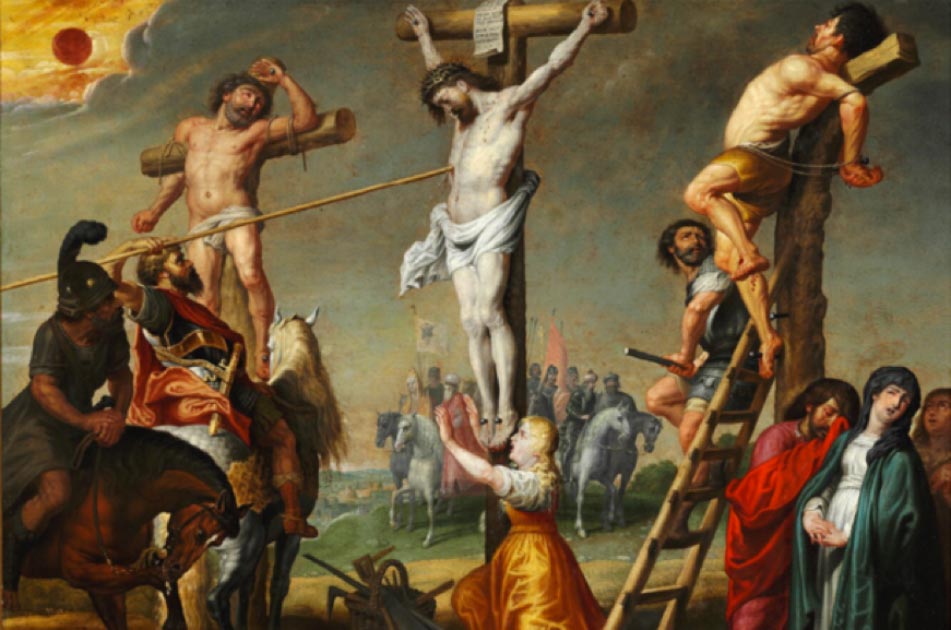
Leader: “Now since it was preparation day, in order that the bodies might not remain on the cross on the sabbath, for the sabbath day of that week was a solemn one, the Jews asked Pilate that their legs be broken, and they be taken down. So, the soldiers came and broke the legs of the first and then of the other one who was crucified with Jesus. But when they came to Jesus and saw that he was already dead, they did not break his legs, but one soldier thrust his lance into his side, and immediately blood and water flowed out. An eyewitness has testified, and his testimony is true; he knows that he is speaking the truth, so that you also may believe. (John 19: 31 – 35)
All: Lord Jesus, open my heart as I contemplate the wound created when the lance pierced Your side.
Leader: Lord, as we picture the abhorrent violence done to Your sacred heart, within the breast where Saint John just hours before had laid his head, we contemplate the temporal and mystical meaning of this wound. The soldier’s lance pierced Your side, perhaps puncturing the pericardial sac, where fluid had accumulated, and Your heart. Thus was released the clear liquid John describes as water, as well as Your precious blood. In this moment, the prophesy of Zechariah was fulfilled: “And I will pour out on the house of David and the inhabitants of Jerusalem a spirit of compassion and supplication, so that, when they look on him whom they have pierced, they shall mourn for him, as one mourns for an only child, and weep bitterly over him, as one weeps over a first-born.” (Zechariah 12:10) And again, “there shall be a fountain opened for the house of David and the inhabitants of Jerusalem to cleanse them from sin and uncleanliness.” (Zech. 13:1). Lord, help this image of Your final wound elicit our compassion and our heartfelt appreciation for Your saving gifts: the waters of Baptism and the precious blood of Holy Communion flowing for our salvation.
Let us pray.
All: Our Father, 10 Hail Marys, Glory Be…, Fatima ejaculation
Conclusion
Leader: “The disciples of Jesus recounted what had taken place along the way, and how they had come to recognize him in the breaking of bread. While they were still speaking about this, he stood in their midst and said to them, ‘Peace be with you.’ But they were startled and terrified and thought that they were seeing a ghost. Then he said to them, ‘Why are you troubled? And why do questions arise in your hearts? Look at my hands and my feet, that it is I myself. Touch me and see, because a ghost does not have flesh and bones as you can see I have.’ And as he said this, he showed them his hands and his feet.
While they were still incredulous for joy and were amazed, he asked them, ‘Have you anything here to eat?’ They gave him a piece of baked fish; he took it and ate it in front of them. He said to them, ‘These are my words that I spoke to you while I was still with you, that everything written about me in the law of Moses and in the prophets and psalms must be fulfilled.’
Then he opened their minds to understand the Scriptures. And he said to them, ‘Thus it is written that the Christ would suffer and rise from the dead on the third day and that repentance, for the forgiveness of sins, would be preached in his name to all the nations, beginning from Jerusalem. You are witnesses of these things.’
Let us pray.
All: Lord, grant that by meditating on Your sacred wounds we may come to appreciate the suffering You endured for our salvation, as well as the truth of Your Resurrection. Confirm us in our resolve to repent of our sins and strengthen our faith so that we may ever be steadfast witnesses to Your divine love. Amen.
Leader: O Holy Mother Mary, no witness to Our Lord’s Passion suffered so intimately with Him as did you. Please add your prayers to ours.
All: Hail Holy Queen…. Amen.
If you are looking for edifying and engaging reading for the Easter Season, please consider my novel, The Lance and the Veil, and adventure in the time of Christ.
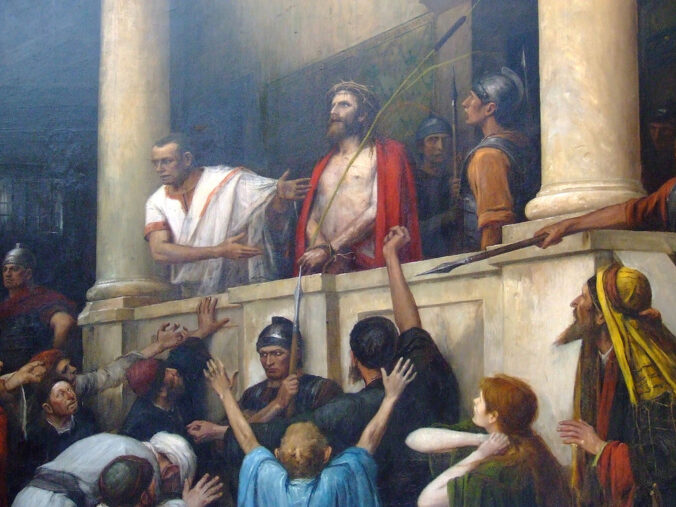

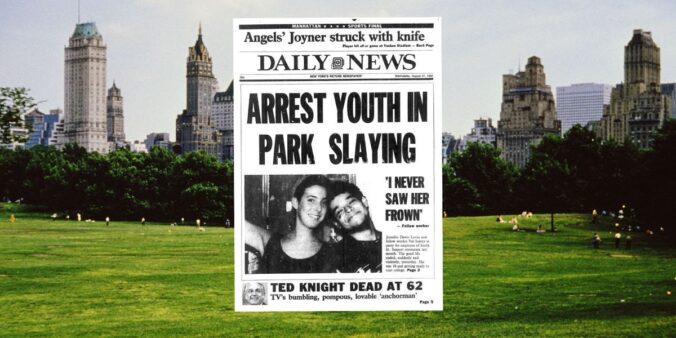
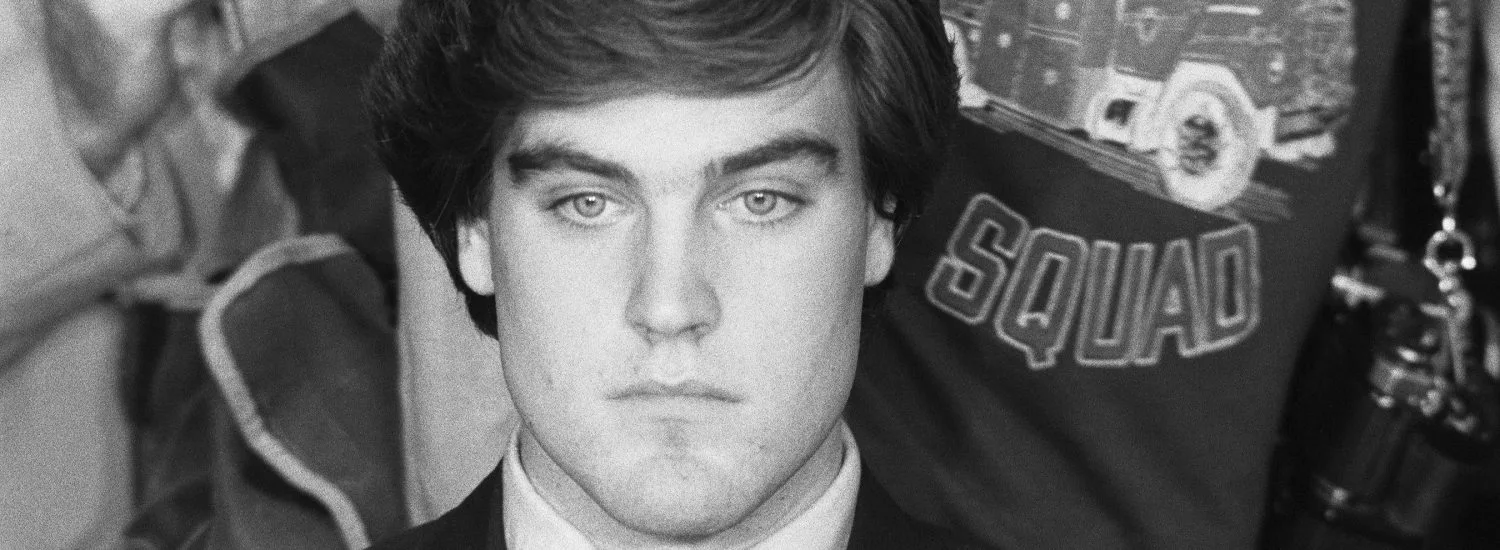
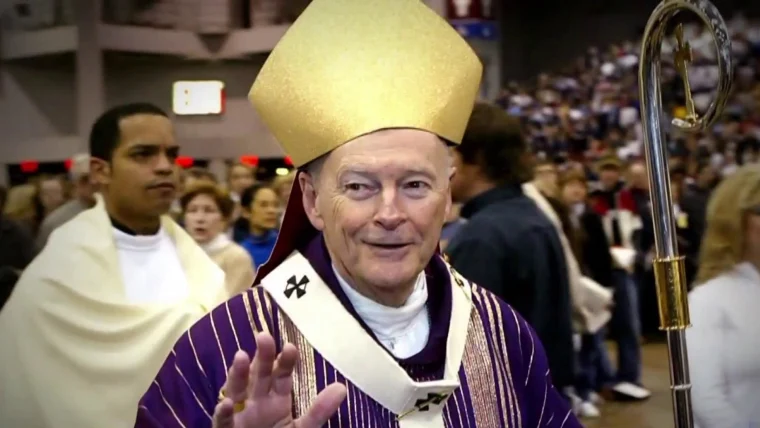

















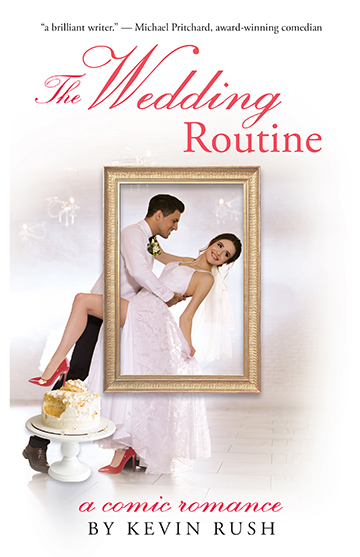


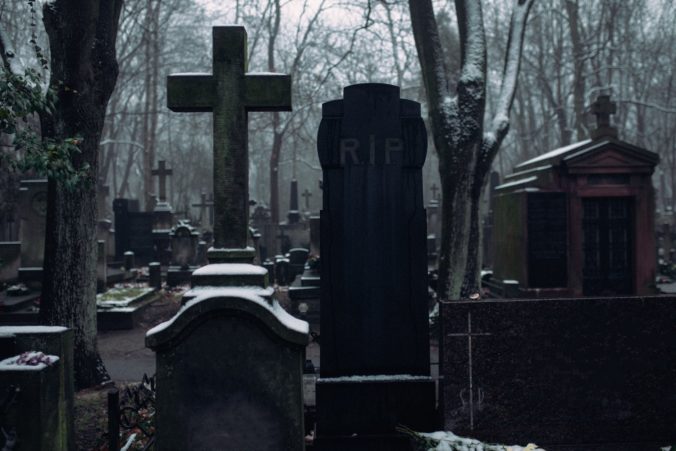








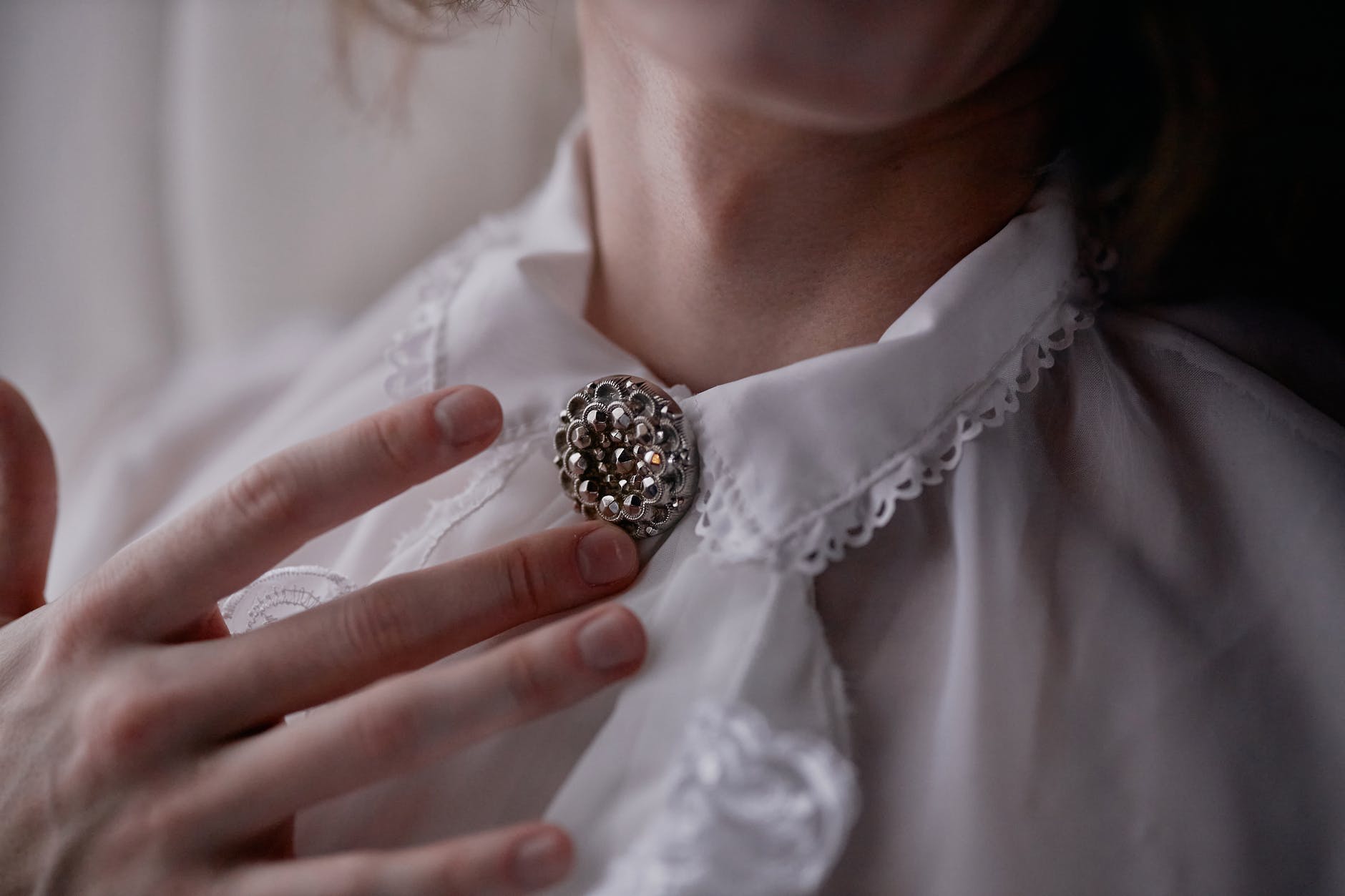












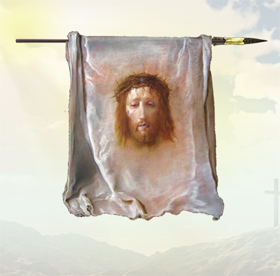


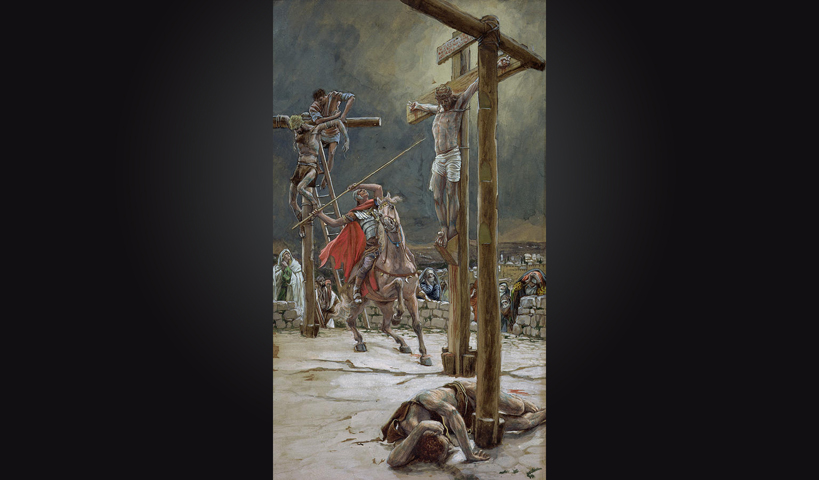


Recent Comments